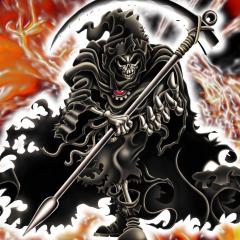-
Recently Browsing
- No registered users viewing this page.
-
Topics
-
Posts
-
By Neverenoughwatches · Posted
I would say it does depend on how the keyless works are set up, i have had it happen once before. Pulling the stem to time set mode can also be a problem, that puts the yoke or setting lever under tension from it's spring and without the extra stability once the stem has been withdrawn and the set screw being loosened the yoke can flick over it's spring or something else. I find that happens from time to time usually its something cheap Rich, and force myself to stop pushing, I've broken a set lever more than once doing this. Dials tight up to the set lever cause this , cheap Smiths are renowned for it. Too much depth in the stem slot as well,I've shortened quite a few yoke bends to make the last job of entering the stem easier at the casing up stage. -
By DieselBurner · Posted
The non-lantern pinion and wheel combo are actually for the motion works. It drives the center wheel. Both the power and chime trains (including the regulator) are all lantern pinion style. The trundles in the lantern pinions all look to have no direct wear from the wheels - no rutting evident under magnification. -
Episode 3: Cleaning and New Surprises Alongside the aforementioned broken screw, while cleaning the parts, I found that the mainspring appeared intact only due to the years of grease. Additionally, one of the pushers seems was missing a screw at some time, and it looks like someone attempted to turn down a new one. Mainspring: Although I would love to use strictly original parts, I believe this might be a bit time-consuming and potentially expensive. Cousins has two options: 1.30 x 0.145 x 420 x 13 and 1.30 x 0.15 x 460 x 13, both non-automatic. The first one matches the original better, but I was wondering, would it be a good idea to use a longer, thicker one? It might provide a bit more run time, but I'm not sure if it's worth adding more energy to a vintage watch (both, judging by the specs provided, fit a 13mm barrel). What do you guys think? Pusher screws: Should I keep the existing screws, following the principle of "if it ain't broke, don't fix it," or should I replace them?
-
The watch is for my collection and I would love to get it back into a serviceable condition but there are no identifying marks on the movement apart from the number 1 stamped under the balance cock
-
Hi I bought this watch not working to repair because of the unusual automatic module, however I can't seem to identify the movement or Maker. The main movement is 11 1/2''' 21 jewels, the escape wheel pictured has both pivots broken Can anyone shed any light on the make and calibre?
-





Recommended Posts